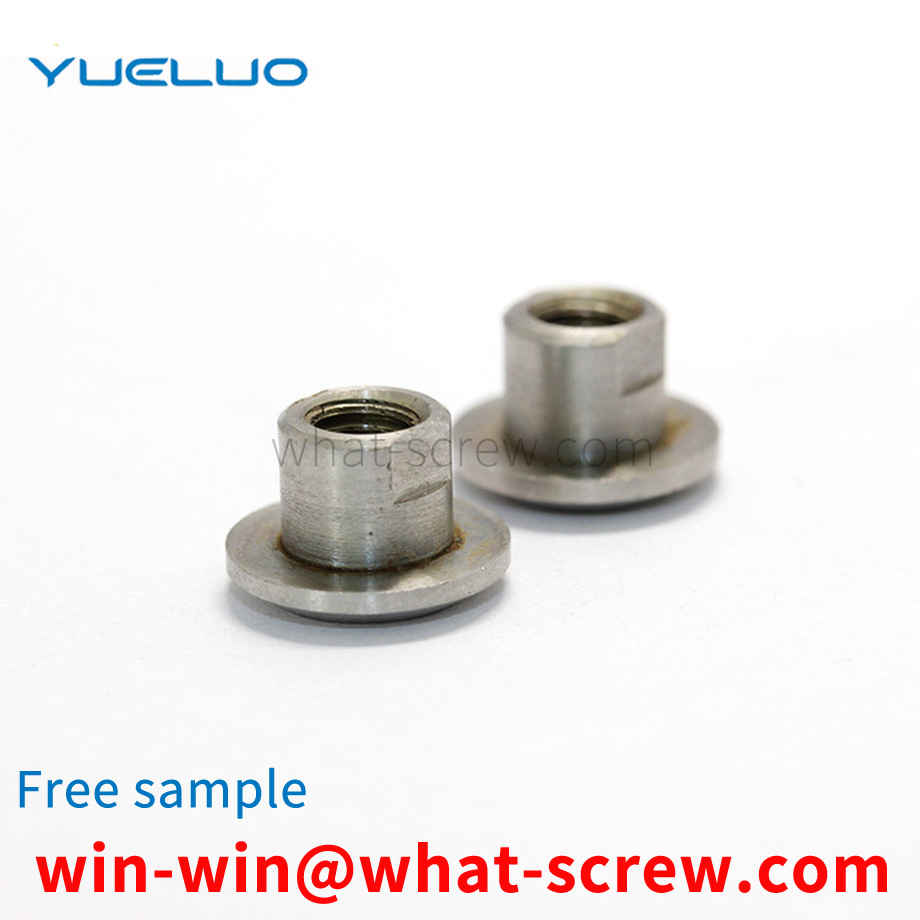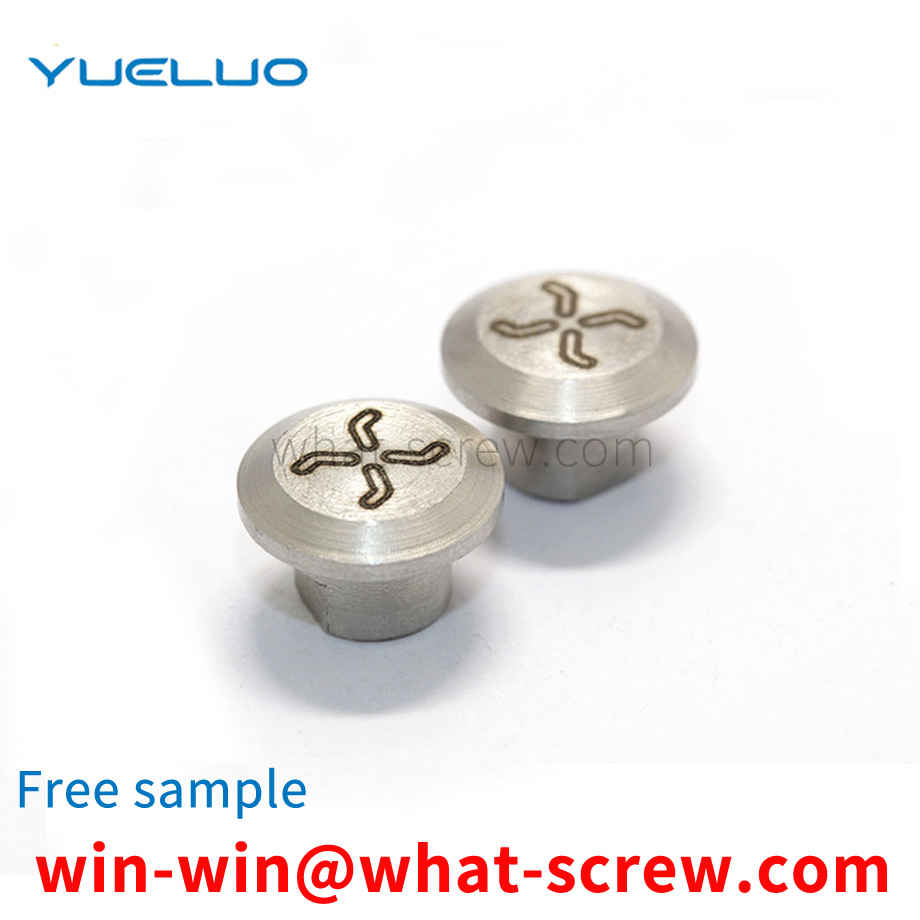In another embodiment of Guangdong Yueluo Hardware Industry Co., Ltd., the slotting device 4 includes a motor 41 and a motor 43, the cutting wheel 42 is fixedly arranged at the output end of the motor 41, and the motor 41 drives the cutting wheel 42 to rotate to open the screw. slot, the motor 43 is fixedly arranged on the workbench 1, the motor 41 is arranged on the motor 43, a track 47 is arranged between the motor 41 and the motor 43, the motor 41 can reciprocate through the track 47, and when the screw is slotted, the motor 41 drives the cutting wheel 42 to move in the direction of the screw. When the slotting is finished, the motor 41 drives the cutting wheel 42 to retract. The fixed wheel 48 is arranged at the output end of the motor 43. The fixed wheel 48 is located directly below the cutting wheel 42. The surface of the middle screw is in contact, and the motor 43 drives the fixed wheel 48 to rotate to grind and polish the surface of the slotted screw to make the surface smooth. Preferably, the direction of rotation of the cutting wheel 42 and the fixed wheel 54 is opposite.
Screws are a common type of fastener on the market. It is a type of fastener consisting of a head and a screw. It can be divided into three categories according to its purpose: machine screws, set screws and special purpose screws. Machine screws are mainly used for a fastened connection between a part with a fixed threaded hole and a part with a through hole, without the need for nut matching (this connection form is called screw connection, which is also a detachable connection; it can also be Matching with nuts, it is used for fast connection between two parts with through holes.) Set screws are mainly used to fix the relative position between two parts. Special purpose screws, such as eyebolts, are used for hoisting parts.
There are two typical pin shearing fixture tooling, among which the traditional fixture shown in Fig. 1 is more complicated and consists of fixture, spacer, washer and shearing block guide post, hardened bushing, shearing block and so on. The cylindrical pin is installed in the hardened bushing, and the axial load is applied through the shear block to complete the shear test. The fixture is complicated in manufacture and has many consumables, because the size of the hardened bushing is similar to that of the cylindrical pin. , and to keep the notch of the cylindrical pin upward, it is difficult to install before the test, and the broken cylindrical pin after the test remains in the hardened bushing and is difficult to remove.
The produced screws, due to unreasonable production aspects, are likely to cause quality problems in the screws. During production, many screw quality problems may be found upon delivery. Let's talk about the quality problems often encountered by screws and the reasons for the quality problems, and finally put forward some solutions. 1. The head of the screw is deformed and the head is crooked. The possible reasons are the poor installation of the first punch of the screw die and the improper adjustment of the machine. 2. The head of the screw is not round. The reason is that the selection of the first punch of the screw mold is improper or the first punch is not full enough. 3. The screw has burrs or burrs. The reason is the poor forming of one punch, mainly caused by too large gap between punch and die hole or too short punch. 4. The screw head is cracked and the screw head is cracked. The reason may be that there is a problem with the quality of the screw wire itself, so before the screw wire is headed, the quality department must check it and use the potion. Especially the stainless steel screw wire, it is necessary to check that it is stainless steel 201 and that is stainless steel 304. It is also possible that a die is used incorrectly (such as a die with a hexagonal washer head for a pan head), and the viscosity of the lubricating oil fails. For the problem of the screw head, you can read the article written by Manager Zhu above - high-strength screw fracture or head crack detection. In this article, some problems encountered by the screw head and how to detect the screw head problem are clearly introduced [4]. The common quality reasons for screws are of course more than the above, this is only part of it. There are other quality issues, then Manager Zhu will talk about it. The above screw quality reasons are for reference. If you encounter these problems, you can try the solutions proposed.
The common riveting techniques of non-blind rivets are divided into cold riveting and hot riveting. Cold riveting is a riveting method that uses a rivet rod to partially pressurize the rivet, and continuously swings around the center or the rivet is forced to expand until the rivet is formed. The common cold riveting methods are the pendulum riveting method and the radial riveting method. The pendulum rolling riveting method is easy to understand, and the rivet head only swings and rolls in the circumferential direction.
We have many years of experience in the production and sales of screws, nuts, flat washers, etc. The main products are: fast paper red, GB923 hexagonal cap nuts, industrial aluminum profile screws, plastic insulated hexagonal bolts and other products, we can provide you with suitable products for you fastener solutions.



















 Service Hotline
Service Hotline




